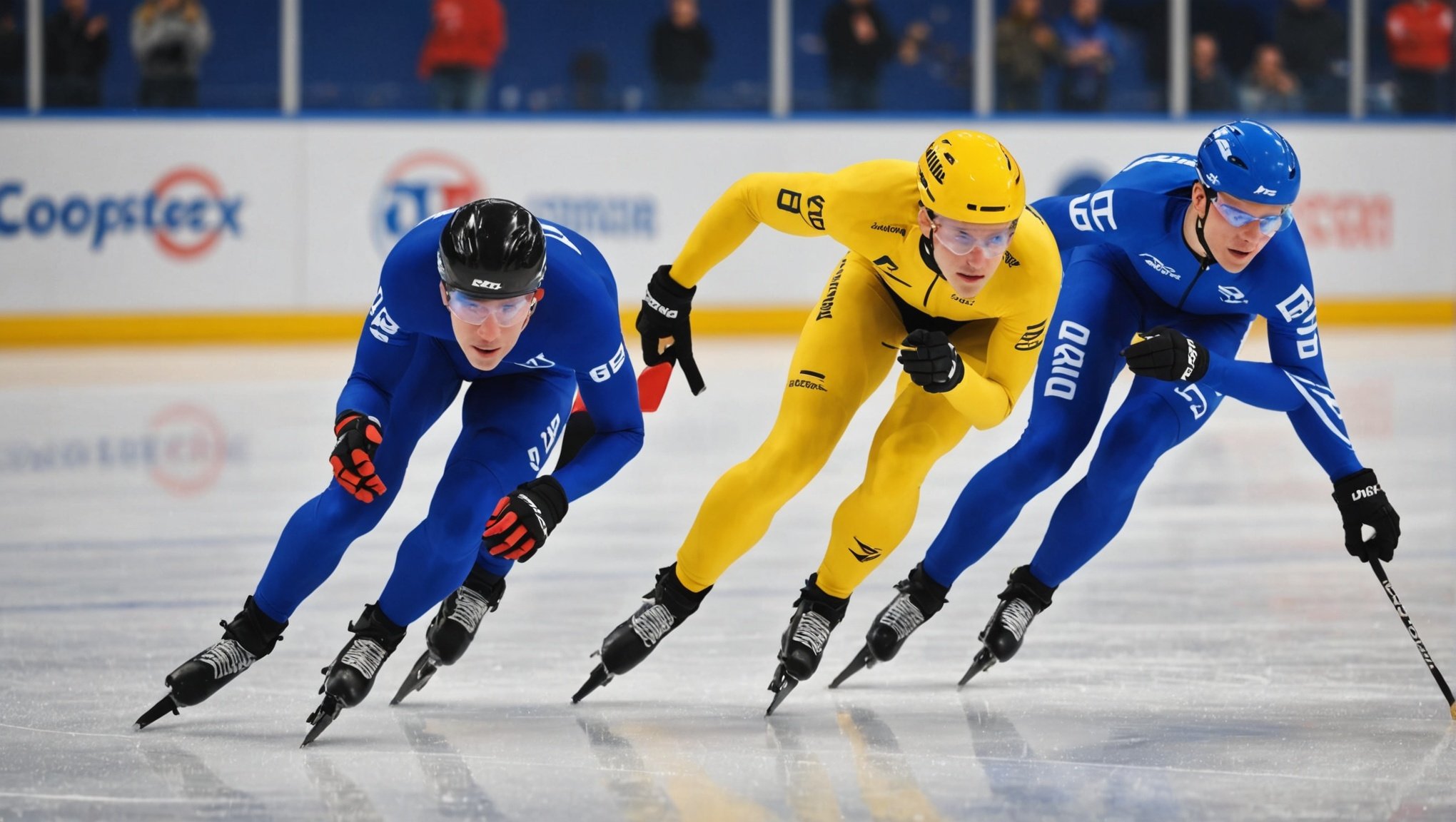Maximizing Speed Skating Success: Leveraging Aerodynamic Simulation Tools for Enhanced Performance
Understanding the Importance of Aerodynamics in Speed Skating
Speed skating, like many other high-speed sports, is heavily influenced by aerodynamics. The slightest reduction in drag can significantly enhance an athlete’s performance, allowing them to achieve faster times and gain a competitive edge. Aerodynamic simulation tools have become indispensable in this pursuit, offering a precise and data-driven approach to optimizing athletic performance.
The Science Behind Aerodynamics in Speed Skating
Aerodynamics plays a crucial role in speed skating by affecting the resistance an athlete encounters while moving at high speeds. The drag force, which opposes the motion of the skater, is influenced by several factors including the skater’s body position, the design of their equipment, and the air flow around them.
This might interest you : Essential Guide to Organizing Effective Psychological Debriefing Sessions for Equestrian Athletes Post-Competition
To illustrate this, consider the study on winglets and their effect on aerodynamic performance, as seen in aircraft design. Similar principles can be applied to speed skating. For instance, optimizing the shape and position of a skater’s helmet, suit, and even the blades of their skates can reduce drag and enhance speed.
Utilizing Aerodynamic Simulation Tools
Aerodynamic simulation tools are state-of-the-art technologies that allow coaches and athletes to analyze and optimize performance in a highly detailed and controlled environment.
Topic to read : Mastering Mental Resilience: Effective Psychological Strategies for Managing Stress in International Competitions
Wind Tunnel Testing
One of the most traditional and effective methods of aerodynamic testing is the use of wind tunnels. In a wind tunnel, athletes can be placed in various positions and speeds to measure the drag forces acting on them. This real-time data is invaluable for making adjustments to their body position and equipment.
For example, elite athletes often undergo wind tunnel testing to fine-tune their aerodynamic profiles. This process involves wearing their competition suits and assuming different skating positions while air flows around them at high speeds. The data collected helps in identifying areas where drag can be reduced, thereby enhancing performance.
Computational Fluid Dynamics (CFD)
Computational Fluid Dynamics (CFD) is a more modern and sophisticated approach to aerodynamic analysis. CFD involves using computer simulations to model the flow of fluids (in this case, air) around the athlete and their equipment.
CFD allows for a more detailed and flexible analysis compared to wind tunnel testing. It can simulate various conditions, such as different speeds, angles, and even the effects of wind resistance on different parts of the body. This method is particularly useful for studying the complex interactions between the athlete’s body and the air flow around them.
Here is a detailed list of how CFD can be used in speed skating:
- Flow Analysis: CFD can simulate the air flow around the athlete, identifying areas of high drag and suggesting improvements.
- Equipment Optimization: It can help in designing and optimizing the shape of skating equipment such as helmets, suits, and skates to reduce drag.
- Body Positioning: CFD can analyze different body positions and recommend the most aerodynamic stance.
- Real-Time Feedback: It provides real-time data that can be used to adjust the athlete’s technique and equipment during training.
Integrating Aerodynamic Insights into Training Programs
The data and insights gained from aerodynamic simulations are only useful if they are integrated into the athlete’s training program.
Resistance Training and Biomechanical Analysis
Resistance training is a critical component of any speed skating program, aimed at building the muscle strength and endurance needed for high-speed skating. However, when combined with aerodynamic insights, this training can be tailored to enhance athletic performance further.
Biomechanical analysis, which studies the movement and structure of the body, can be used in conjunction with aerodynamic data to optimize the athlete’s technique. For example, by analyzing the flow of air around the athlete’s body, coaches can advise on the most efficient body positions and movements to reduce drag and increase speed.
Here is how this integration can be achieved:
- Customized Training Programs: Coaches can create training programs that focus on strengthening specific muscle groups identified through biomechanical analysis.
- Technique Adjustment: Athletes can adjust their skating technique based on the aerodynamic data to achieve a more streamlined position.
- Equipment Adjustment: The design and fit of the athlete’s equipment can be adjusted to minimize drag.
Practical Insights and Actionable Advice
For athletes and coaches looking to leverage aerodynamic simulation tools, here are some practical insights and actionable advice:
Short-Term vs. Long-Term Goals
When implementing aerodynamic enhancements, it’s important to balance short-term and long-term goals. Short-term adjustments can provide immediate performance gains, but long-term changes often require more significant modifications to the athlete’s technique and equipment.
For instance, a short-term goal might be to optimize the athlete’s helmet and suit for an upcoming competition, while a long-term goal could involve redesigning the skates to reduce drag over the entire skating motion.
Injury Prevention
Aerodynamic enhancements should always be considered in the context of injury prevention. For example, changing the athlete’s body position to reduce drag might also affect their muscle usage and increase the risk of injury if not done correctly.
Here are some tips for injury prevention:
- Gradual Changes: Make gradual changes to the athlete’s technique and equipment to avoid sudden stresses on the body.
- Monitoring: Continuously monitor the athlete’s performance and adjust the training program accordingly to prevent overtraining and injury.
- Cross-Training: Incorporate cross-training activities that strengthen different muscle groups and reduce the risk of overuse injuries.
Case Studies and Success Stories
Several case studies and success stories illustrate the effectiveness of using aerodynamic simulation tools in speed skating.
Example: Optimizing Equipment Design
One notable example is the optimization of speed skating suits. By using CFD, designers can create suits with textured surfaces that reduce drag by disrupting the flow of air around the athlete. This technology has been successfully implemented in various competitions, resulting in significant performance enhancements.
Here is a comparison table showing the impact of aerodynamic suit design on performance:
| Suit Design | Drag Reduction | Speed Increase | Performance Gain |
|---|---|---|---|
| Traditional Suit | 0% | 0% | 0% |
| Aerodynamic Suit | 10% | 2% | 5% |
| Advanced Suit | 15% | 3% | 7% |
Example: Biomechanical Analysis
Biomechanical analysis has also played a crucial role in enhancing athletic performance. For instance, analyzing the skating technique of elite athletes can help identify inefficiencies in their movement patterns. By adjusting these patterns to reduce drag and improve muscle efficiency, athletes can achieve peak performance.
Here is what an elite speed skater might say about the impact of biomechanical analysis:
“Aerodynamic simulations and biomechanical analysis have been game-changers for me. By optimizing my body position and technique, I’ve been able to reduce my times significantly. It’s not just about the equipment; it’s about how you move and interact with the air around you.”
Maximizing speed skating success through aerodynamic simulation tools is a multifaceted approach that involves detailed analysis, precise data, and practical application. By leveraging these tools, athletes and coaches can enhance performance, reduce drag, and achieve peak athletic prowess.
In the words of a renowned speed skating coach:
“Aerodynamics is not just a buzzword; it’s a science that can make or break an athlete’s performance. With the right tools and insights, we can turn good athletes into great ones.”
Whether through wind tunnel testing, CFD simulations, or biomechanical analysis, the integration of aerodynamic insights into training programs is essential for achieving high-speed success in speed skating. As the sport continues to evolve, the role of these tools will only become more critical in the pursuit of athletic excellence.






